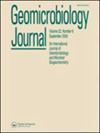Photocatalytic Removal of Anthracene using Zinc Oxide Nanoparticles Synthesized by Fusarium proliferatum WC416
IF 2.2
4区 环境科学与生态学
Q3 ENVIRONMENTAL SCIENCES
引用次数: 0
Abstract
AbstractRelease of complex waste in environment due to massive industrialization is a major threat globally. Anthracene is a polycyclic aromatic hydrocarbon generally released as a waste from petrochemical industries. It may bioaccumulate in food chain which results into nephrotoxicity in humans. Thus, there is a necessity to clean up the contaminated site efficiently. Bioremediation is ecofriendly technique for waste reclamation however it consumes more time. Thus, nanotechnology has exploded with unique properties of nanomaterials. Bio-based nanoparticles (NPs) synthesis is a recent and agro ecologically friendly approach for remediating environmental waste. For the first time present study reports Fusarium proliferatum WC416 isolated from refinery effluent for the synthesis of zinc oxide nanoparticles (ZnO NPs). Moreover, biosynthesized ZnO NPs used for their photocatalytic efficiency to remove anthracene at varying concentration. During synthesis of ZnO in aqueous medium showed a characteristic peak at 365 nm as analyzed by Ultraviolet–visible spectrum. The formation of NPs was further confirmed by Fourier transform infrared spectroscopy (FTIR), transmission electron microscope (TEM), and energy-dispersive x-ray (XRD). Morphologically the synthesized ZnO NPs were found to be in irregular polygonal shapes. Moreover, ZnO NPs showed photocatalytic activity for removal of anthracene upto 65 ± 0.03%, p value = 0.00032 at 100 ppm followed by 50.7% ± 0.02%, p value = 0.00023 at 250 ppm and 40.83 ± 0.03%, p value = 0.00042 at 500 ppm within 6 hr duration. Anthracene transformation during photocatlytic activity was confirmed by GC MS analysis, and the products were detected as 1,2 benzene carboxylic acid (m/z 166) and salicylic acid (m/z 138). Phytotoxicity effect of synthesized ZnO NPs on seed germination index of Phaseolus moonga and Vigina radiata was also studied to promote sustainable and biocompatible nano-agriculture.Keywords: AnthraceneF. proliferatum WC416fungal synthesiszinc oxide nanoparticles (ZnO NPs) AcknowledgementThe author is thankful to School of Environment and Sustainable development, Central University of Gujarat for providing research facilities.Author contributionsAll authors contributed to the research conception and design. Material preparation, data collection, analysis and results interpretation were performed by (Shalini Gupta), (Bhawana Pathak) and (Raman Kumar Ravi). The manuscript was written by (Shalini Gupta), correction and edited by (Raman Kumar Ravi) and finalization of manuscript was done by (Bhawana Pathak). All authors read and approved the final manuscript.Disclosure statementNo potential conflict of interest was reported by the authors.The authors declare that no funds, grants, or other support were received during the preparation of this manuscript.Data availability statementAll data generated or analyzed during this study are included in this manuscript.增殖镰刀菌WC416合成氧化锌纳米颗粒光催化脱除蒽
大规模工业化导致的复杂废弃物排放是全球面临的一大威胁。蒽是一种多环芳烃,通常作为石油化工废弃物排放。它可能在食物链中生物积累,导致人体肾毒性。因此,有必要对污染场地进行有效的清理。生物修复技术是一种环保的垃圾回收技术,但耗时较长。因此,纳米技术以其独特的纳米材料特性而爆发。生物基纳米颗粒(NPs)的合成是一种最新的农业生态友好的方法,用于修复环境废物。本研究首次报道了从炼油厂废水中分离得到的增殖镰刀菌WC416用于合成氧化锌纳米颗粒(ZnO NPs)。此外,生物合成的ZnO NPs在不同浓度下具有光催化脱除蒽的效率。通过紫外可见光谱分析,ZnO在水溶液中合成时在365 nm处有一个特征峰。傅里叶变换红外光谱(FTIR)、透射电子显微镜(TEM)和能量色散x射线(XRD)进一步证实了NPs的形成。形貌上,合成的ZnO纳米粒子呈不规则的多边形形状。此外,ZnO NPs在6小时内对蒽的光催化活性最高可达65±0.03%,在100 ppm时p值= 0.00032,其次为50.7%±0.02%,在250 ppm时p值= 0.00023,在500 ppm时p值= 40.83±0.03%,p值= 0.00042。GC - MS分析证实了光催化过程中蒽的转化,产物为1,2苯羧酸(m/z 166)和水杨酸(m/z 138)。为了促进纳米农业的可持续发展和生物相容性,还研究了合成氧化锌NPs对菜豆和红枣种子萌发指数的植物毒性影响。关键词:AnthraceneF。作者感谢印度古吉拉特邦中央大学环境与可持续发展学院提供的研究设施。所有作者都对研究的构思和设计做出了贡献。材料准备、数据收集、分析和结果解释由Shalini Gupta、Bhawana Pathak和Raman Kumar Ravi完成。手稿由沙利尼·古普塔(Shalini Gupta)撰写,由拉曼·库马尔·拉维(Raman Kumar Ravi)修改和编辑,手稿的定稿由巴瓦纳·帕塔克(Bhawana Pathak)完成。所有作者都阅读并批准了最终的手稿。披露声明作者未报告潜在的利益冲突。作者声明在撰写本文期间未收到任何资金、资助或其他支持。数据可用性声明本研究过程中产生或分析的所有数据都包含在本文中。
本文章由计算机程序翻译,如有差异,请以英文原文为准。
求助全文
约1分钟内获得全文
求助全文
来源期刊

Geomicrobiology Journal
环境科学-地球科学综合
CiteScore
4.80
自引率
8.70%
发文量
70
审稿时长
3.3 months
期刊介绍:
Geomicrobiology Journal is a unified vehicle for research and review articles in geomicrobiology and microbial biogeochemistry. One or two special issues devoted to specific geomicrobiological topics are published each year. General articles deal with microbial transformations of geologically important minerals and elements, including those that occur in marine and freshwater environments, soils, mineral deposits and rock formations, and the environmental biogeochemical impact of these transformations. In this context, the functions of Bacteria and Archaea, yeasts, filamentous fungi, micro-algae, protists, and their viruses as geochemical agents are examined.
Articles may stress the nature of specific geologically important microorganisms and their activities, or the environmental and geological consequences of geomicrobiological activity.
The Journal covers an array of topics such as:
microbial weathering;
microbial roles in the formation and degradation of specific minerals;
mineralization of organic matter;
petroleum microbiology;
subsurface microbiology;
biofilm form and function, and other interfacial phenomena of geological importance;
biogeochemical cycling of elements;
isotopic fractionation;
paleomicrobiology.
Applied topics such as bioleaching microbiology, geomicrobiological prospecting, and groundwater pollution microbiology are addressed. New methods and techniques applied in geomicrobiological studies are also considered.
 求助内容:
求助内容: 应助结果提醒方式:
应助结果提醒方式:


